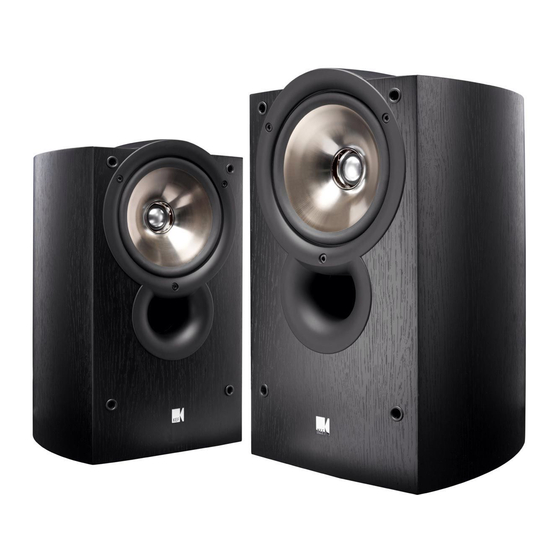Advertisement
Table of Contents
Advertisement
Table of Contents

Summary of Contents for KEF iQ1
- Page 2 Acoustic intelligence - that’s the best way to describe what KEF engineers have applied to create a new range worthy of the award-winning Q Series it replaces. Hence the name: iQ. From the second you spot the soft sheen of titanium on the main driver cones, you know you’re in for something special.
- Page 3 Acoustic intelligence You don’t have to be a genius to understand why Q Series speakers sound so good. After all, they incorporate the Uni-Q technology originally designed for one of the world’s finest speaker ranges, KEF’s legendary Reference Series. The Uni-Q concept is based on using aerospace materials to make the tweeter small enough to place at the acoustic centre of the bass/midrange cone.
- Page 4 Smart thinking With so much high-end technology inside, it’s not surprising that the Q’s distinctive styling bears a family resemblance to the latest Reference Series, with the Uni-Q ‘pod’ faired in to elliptical-section cabinets. The design was driven by functional considerations rather than aesthetics. Curved enclosures minimise distortion from the internal acoustic reflections generated by parallel straight surfaces - but because they’re complicated to make, the benefit is usually reserved for the most expensive audiophile speakers.
- Page 5 Everything from the titanium surface of the Uni-Q cones to the shrouded bi-wire terminals says ‘quality’ - and for music or movies, that’s exactly how iQ1 sounds. For even fuller presentation where the available space nevertheless dictates a bookshelf speaker, iQ3 takes all the performance advantages of the iQ1 a step further.
- Page 6 - and with KEF’s massive internal bracing, none of the bass extension and faultless 3-D imaging. The tonal match is perfect with the rest of LF distortions that usually affect tall speakers.
-
Page 7: Powered Subwoofers
⁄ ”) Uni-Q point source array flanked by two equally large long-throw, ultra-low distortion LF drivers, it combines the startling vocal clarity of KEF’s latest aluminium dome 19mm ( ⁄ ”) tweeter with clean, tightly controlled bass extension and high output. Screen action is precisely located in a densely textured 3-D soundscape that envelops everyone in the room. - Page 8 Specifications Design Two-way bass reflex Sensitivity (2.83V/1m) Maximum output Drive units 130mm (5 ⁄ ”) Uni-Q 19mm ( ⁄ ”) aluminium dome HF Nominal impedance Magnetic shielding Frequency response 50Hz - 40kHz Weight Crossover frequency 2.8kHz Dimensions H x W x D Amplifier requirements 10 - 100W Design...
- Page 9 © KEF Audio (UK) 2005 www.kef.com KEF Audio (UK), Eccleston Road,Tovil, Maidstone, Kent, ME15 6QP U.K. Telephone: + 44 (0) 1622 672261. Fax: + 44 (0) 1622 750653 www.kefamerica.com KEF America, 10 Timber Lane, Marlboro, New Jersey, 07746 USA. Telephone: + 1 732 683 2356. Fax: + 1 732 683 2358 www.kefaudio.de...















Need help?
Do you have a question about the iQ1 and is the answer not in the manual?
Questions and answers